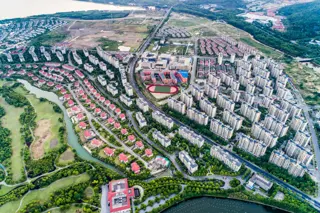Chandigarh's Ambitious ₹2.73 Billion Infrastructure Push: Real Estate Implications for FY 2025
 Chandigarh's administration has unveiled a sweeping ₹2.73 billion development plan targeting FY 2025, aiming to modernize urban infrastructure and address housing shortages. Central to this initiative are 600 new government housing units and a state-of-the-art Police Training Centre, along with broader public amenity improvements.
Chandigarh's administration has unveiled a sweeping ₹2.73 billion development plan targeting FY 2025, aiming to modernize urban infrastructure and address housing shortages. Central to this initiative are 600 new government housing units and a state-of-the-art Police Training Centre, along with broader public amenity improvements.
Strategic Priorities in the Development Plan
A closer look reveals two main pillars driving this investment:
- Affordable Housing Expansion: Building over 600 subsidized residential units to meet growing public sector needs
- Security Infrastructure Uplift: Establishing a modern Police Training Centre to boost regional law enforcement capabilities
- Urban Connectivity Projects: Implicit investments in roads, utilities, and inter-city transit systems
Real Estate Ripple Effects in Mohali and Beyond
This spending surge is expected to trigger significant movement in Tricity (Chandigarh, Mohali, Panchkula) real estate markets: Mohali - Anticipated boom in residential demand as government employees relocate Zirakpur - Expected spike in commercial real estate needs for ancillary services Satellite Cities - Enhanced public transit infrastructure could unlock land value potential
![Visualization of urban expansion corridors]
Expert Analysis: Growth Drivers for Property Markets
Mukul Bansal, MD of Motiaz, highlights the transformative potential: "This initiative signals Chandigarh's commitment to becoming a model region. Quality housing and security infrastructure will attract businesses and residents, creating a virtuous cycle for property development."
Key predicted outcomes:
- Residential: Increased demand for affordable housing near development zones
- Commercial: IT hubs, logistics and administrative complexes create new opportunities attract professionals
- Legal: Potential rezoning to accommodate institutional projects
Policy Implementation Roadmap
While specific timetables remain undisclosed, analysts predict phased execution:
- Short-Term (2025-2026): Site acquisitions and contractor selections
- Mid-Term (2026-2028): Core infrastructure installations
- Long-Term (2028+): Occupancy management systems
Risks and Mitigation Strategies
Potential challenges include coordination between administrative bodies and construction delays. Successful implementation will likely require:
- Stakeholder Alignment: Between housing boards, police departments, and contractors
- Citizen Engagement: Transparent communication about project impacts
- Fiscal Planning: Contingency funding for cost overruns
This large-scale development underscores Chandigarh's evolution as a strategically planned Indian city. Real estate investors should monitor tender releases and zoning changes, particularly in Mohali's emerging suburbs and Tricity connectivity nodes. The emphasis on security infrastructure could further position Chandigarh as a hub for administrative and legal services sectors.